Content
Even 30-40 years ago, breeders were developing new varieties hogweed, today many scientific minds are struggling with the problem of extermination of this plant. Why hogweed has become unnecessary and even dangerous, how to destroy hogweed, and what you should definitely not do - all the answers are in this article.
Varieties of hogweed
Today, several varieties of the plant are known, but Sosnovsky's hogweed is considered the most dangerous for humans. This plant is characterized by a height of up to four meters, huge white umbrella-shaped inflorescences, sweeping leaves and thick hollow stems.
Everything would be fine, such a giant plant even looks very decorative, but, as it turned out, Sosnovsky's hogweed is very dangerous to human health. It's all about the juice of this plant, which causes real chemical burns.
When the juice comes into contact with human skin weed At first it doesn’t show itself at all. But as soon as the sun illuminates this area of skin, terrible blisters and severe burning will appear. It turned out that Sosnovsky's hogweed juice is phototoxic, that is, it becomes aggressive only under the influence of ultraviolet radiation.
In dense shade or in a dark room, the skin is washed with running water and soap suds, wiped with alcohol or potassium permanganate. It is better not to go out in the sun for several days, as the juice is active for 72 hours.
Not only Sosnovsky's hogweed was subjected to global destruction. Other varieties of this plant also fell out of favor due to rapid growth and catastrophic survivability.
Features of the weed
The destruction of Sosnovsky's hogweed is completely justified, because these plants are poisonous and dangerous to humans. But why do people fight other types of hogweed on their plots, since it is quite decorative and can decorate a dacha no worse than exotic flowers?
The fact is that Initially, hogweed was even selected, they tried to develop different varieties and enhance the natural qualities of this plant. In Soviet times, it was assumed that the weed could cope with several important tasks at once:
- Serve as feed for cattle, pigs and goats. The growth rate of the hogweed stem is up to 10 cm per day, which allows you to obtain tons of green food in a very short time.
- A dense wall of thick stems was supposed to protect roads and major highways from cattle - cows could not pass through the thickets of old woody weeds, so they did not impede the movement of vehicles.
- Sosnovsky's hogweed and all other species of this plant very effectively process exhaust gases, returning pure oxygen to the atmosphere.Scientists of the Soviet period believed that dense plantings of hogweed along roadsides could neutralize toxic exhaust gases, so the plant was planted along highways in huge quantities.
- Cut stems and leaves of the weed can become an excellent fertilizer, the quality and composition of which is compared to cow manure. The root system of the plant additionally saturates the soil with nitrogen - after hogweed, a bountiful harvest of any crop can be grown on the site.
And at first, the plant performed all these tasks very successfully. But phenomenal vitality and simply a huge number of seeds made hogweed so widespread that other plants simply could not grow - hogweed kills all plants, both weeds and cultivated ones.
And there are much fewer cows in the country: now there is no one to regulate the amount of this plant. Considering that one plant produces up to 70 thousand seeds per season, and taking into account the exceptional germination of these seeds, it can be argued that it is extremely difficult to fight hogweed. And a person has to do this.
Strengths and weaknesses of the plant
To find out how to get rid of hogweed on your site, you need to understand its characteristics. So, weed has the following strong qualities:
- Flowers can be pollinated by insects, or they can produce seeds without pollination, since hogweed is a self-pollinating plant.
- Frosts do not kill the seeds, but make them even stronger, since this plant loves stratification. After severe winter frosts, seed germination increases sharply.
- Hogweed is a very strong and fast-growing plant - other crops have no chance next to tall and powerful bushes.
- The weed will grow for as many years as it takes for it to sow its seeds. That is, until the plant continues its race, it will not die. One bush can grow like this in one place for up to 15 years.
- The bushes do not reproduce from the roots - the plant is an annual. But if you cut the stem, the root buds will wake up and the hogweed will be reborn.
- The seeds remain viable after five and fifteen years of dormancy.
- Small seeds are easily transported over vast distances by rivers, wind, birds and animals. The appearance of hogweed is possible even in those areas where it has never been before.
- Hogweed umbrellas cut even in an immature state are able to ripen and produce well-germinated seeds. Seeds at any stage of their development can only be destroyed by fire.
All this complicates the process of ridding the cottage of hogweed. But fortunately the plant has several weak points, such as:
- the plant does not like areas with stagnant water;
- like any plant, it needs sunlight to develop;
- the plant that produces flowers and seeds certainly dies;
- Hogweed does not reproduce by rhizomes;
- the roots of the grass are at a depth of about 30 cm - they can be reached;
- seeds will not be able to germinate under a 30-centimeter layer of soil or under thick mulch.
Important! To effectively combat hogweed, you need to use several of its “weaknesses” at once. After all, for example, you can cut the stems of a weed, but buds will immediately bloom on its roots. If you destroy the rhizome, seeds will certainly remain in the ground. It is necessary to take comprehensive control measures.
How can you get rid of hogweed in your country house?
To remove this grass from the site forever, you will have to work hard. It is unlikely that this will be possible to do in one season; you will have to monitor the condition of the site for at least a couple of years.
There are several methods of weed control:
- chemical;
- agrotechnical;
- biological;
- mechanical.
It is necessary to consider each of the methods in more detail.
Chemical control method
In forests and steppes, it is customary to remove hogweed using a substance such as Roundup. The composition is simply drawn into a large syringe and each plant is given an “injection”. In a few days, the hogweed will die, but its seeds from previous seasons will remain in the ground. That's why For a few more years you need to monitor the site and remove young shoots.
A safe substitute for herbicides is diesel fuel; on its basis, a folk method of weed control has been created. Diesel is drawn into a syringe and “injections” are also given to the hogweed. It must be remembered that the best time for “injections” is May or early June, while the weed stems are young and not woody. Later, you can try injecting the hogweed into the sepals.
Agricultural technology on a plot with weeds
One of the most effective ways to destroy hogweed in a summer cottage is to mulch the soil. It is best to mulch in early spring, when the seeds have not yet sprouted. But you can use mulch later, but first you will have to cut or mow the grass to the roots.
Ordinary mulch in the form of sawdust or straw is harmless for hogweed - this plant is too strong.In this case, you will have to use thick and dense black polyethylene film, its thickness should be at least 100 micrometers.
The film is spread over the entire area and additionally pressed with boards, earth or construction waste. If this is not done, the weed stems will lift the covering and damage it, because they are very strong.
There will still be active weed seeds in the soil, but young plants are much easier to deal with - they are easily pulled out of the ground along with the roots. It is good to sow the cleared area with one of the lawn grasses so that they clog the young shoots of the weed.
Mechanical cleaning
This method is the most labor-intensive, but also quite effective. In this case, the hogweed is removed manually or with a shovel - large areas cannot be processed alone.
This product is reliable, but is only suitable for young plants. The roots and stem of the perennial weed are so strong that even an ax, let alone a shovel, cannot break them.
Young shoots can be pulled out by hand, but the stems are fragile and break easily. Therefore, it is better to remove the weed after rain or after watering the area.
Young shoots must be trimmed with a shovel, capturing 15-20 cm of the underground part of the plant. This way you can remove dormant hogweed buds. But after a couple of weeks you need to monitor the process - the hogweed may sprout new shoots.
If the weed is already blooming, you can try to trick it. It is known that the main task of hogweed is to produce offspring. If you do not completely remove the “heads” of the inflorescences, but only cut off the tops of the umbrellas on which the seeds are located, the plant will “think” that its mission has been completed and will safely die itself.
Cut seeds must be burned.
Results
Everything is more or less clear about how to breed hogweed - it is quite difficult to do. It is much easier to take preventive measures: do not import soil from contaminated areas, do not use river water for irrigation, remove individual bushes, preventing their proliferation.
If it turns out that a hogweed plantation blooms in the spring at the purchased dacha, you will have to devote all your efforts to fighting this weed: at the same time injecting, digging up the roots along with the soil and burning the seeds. If you are unsuccessfully getting rid of weeds at your dacha, watch this video:
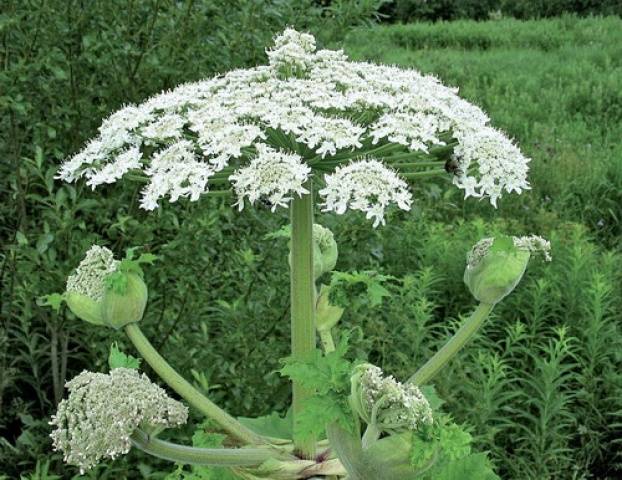
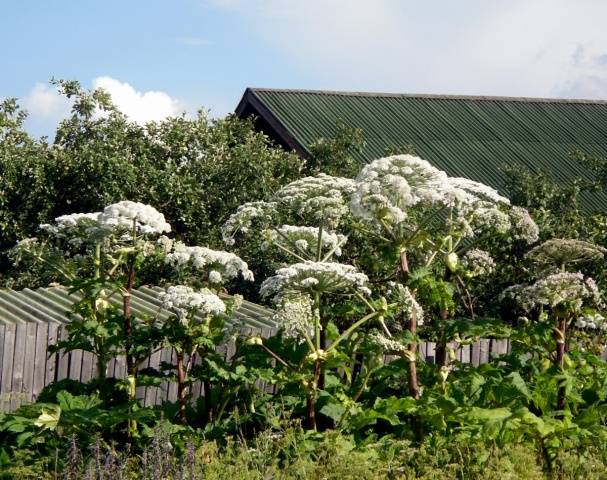
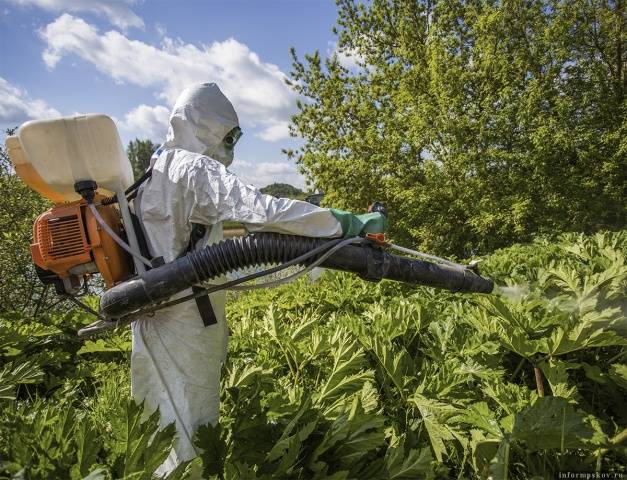
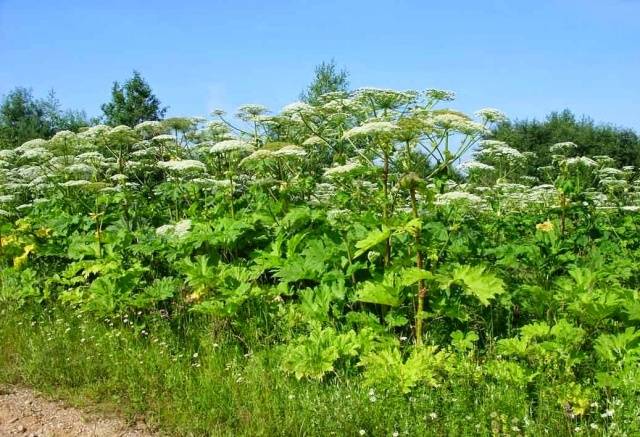
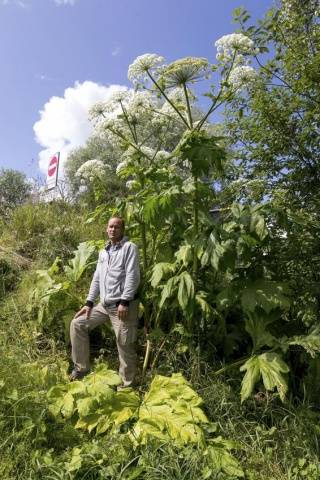
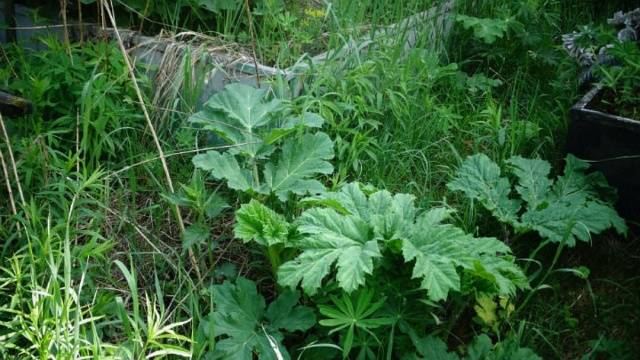
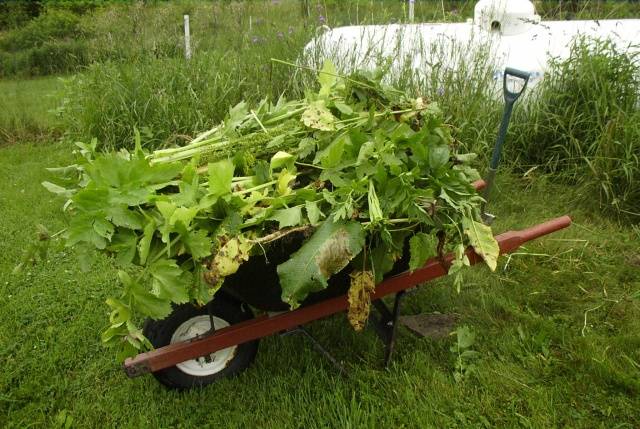
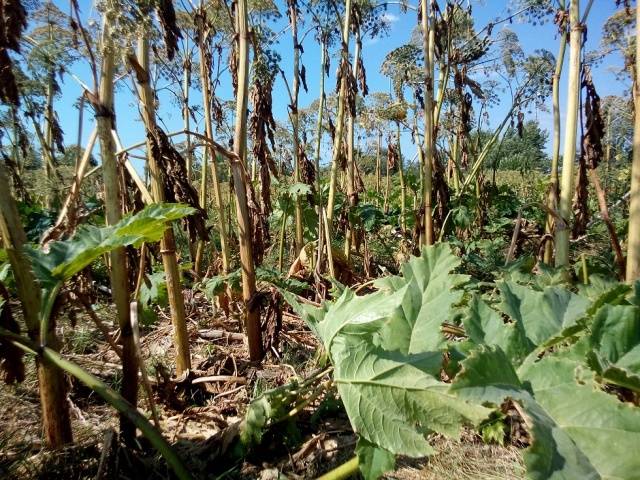
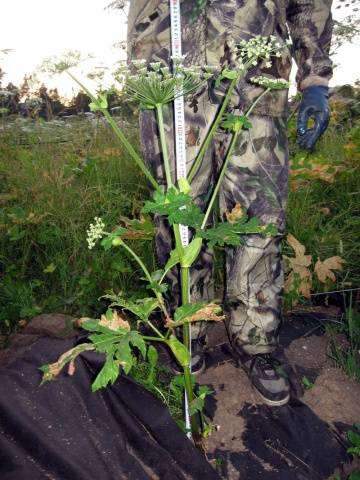
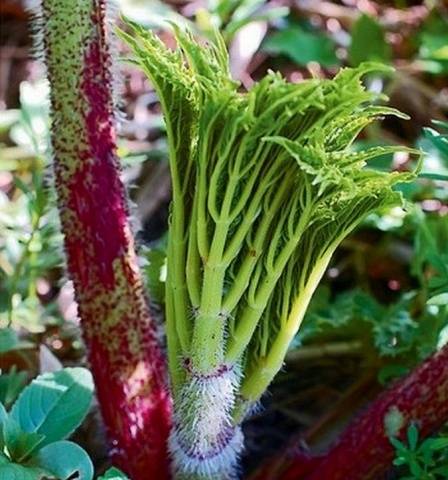
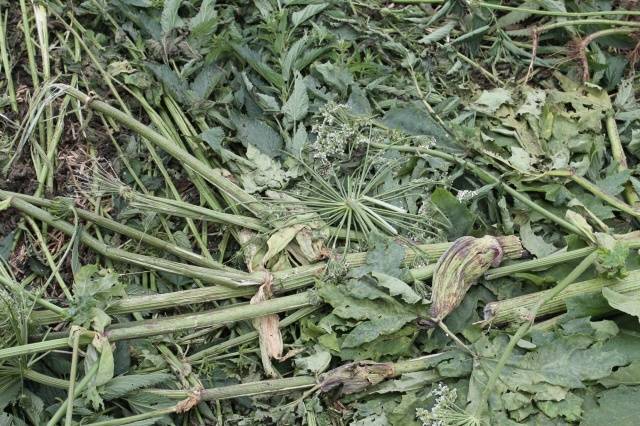
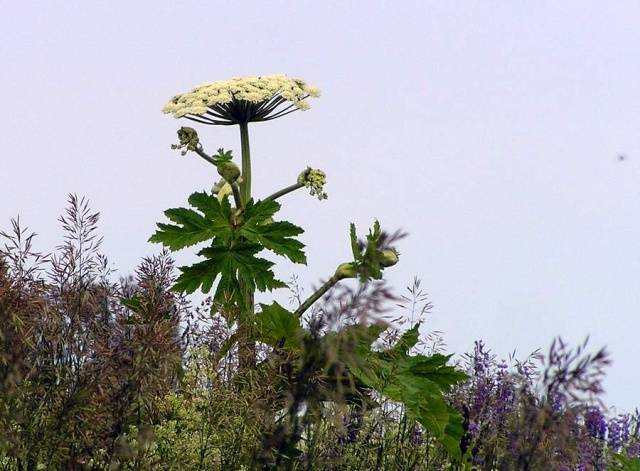
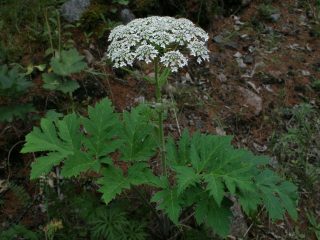


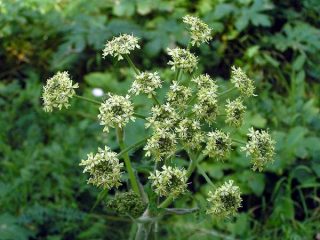
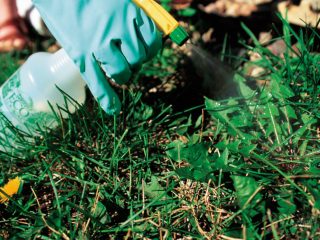



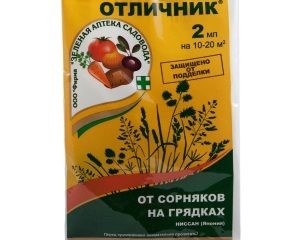
They made a big fire on the site of the “roasted” soil; hogweed has not grown for 2 years